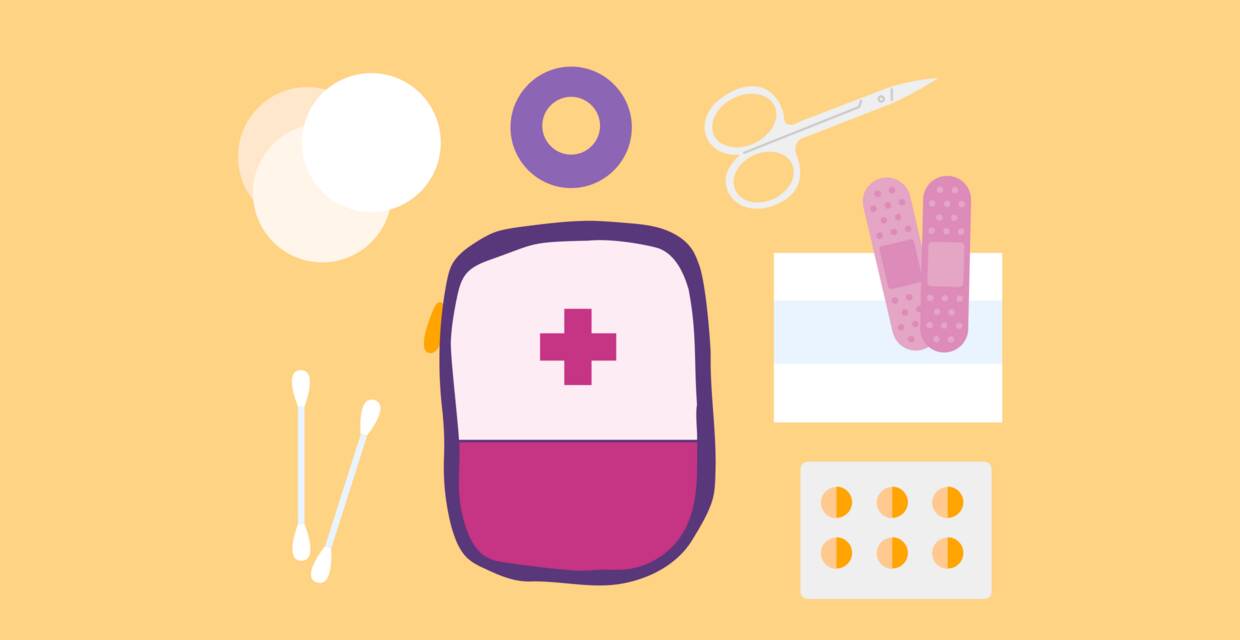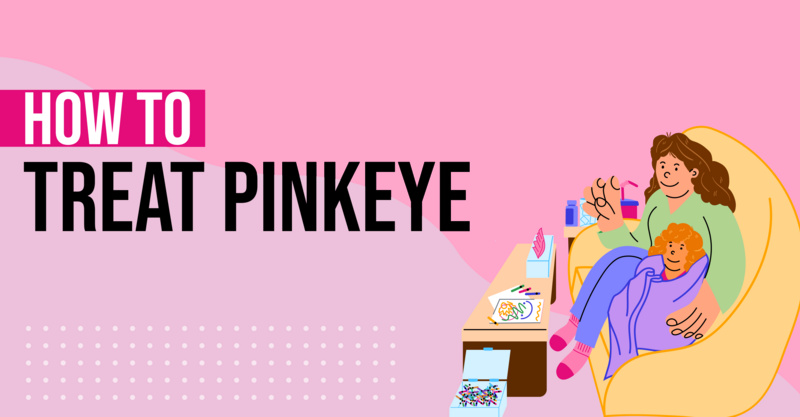Key Points
- Having a well-stocked first aid kit at home can help you handle many minor injuries and illnesses without needing to rush to urgent care or the ER.
- A first aid kit can be purchased pre-assembled or made at home, allowing for customization based on your family's size and health needs. Essential items include adhesive bandages, antibiotic ointment, aspirin, an emergency blanket, a breathing barrier, and an emergency first aid guide among others.
- It's also important to include personal items such as medications, the phone number of your family physician, and local urgent care contacts. If you or a family member has specific allergies, ensure to include an EpiPen in your kit.
- In addition to a first aid kit, a well-stocked medicine cabinet is essential for managing minor ailments like colds, flus, and viruses. Regularly check to ensure that none of your medicines have expired and that you have a 30-day supply of all your prescriptions.
- Telemed services and urgent care centers are available for more serious or uncertain conditions. Always consult a healthcare professional if you're unsure about treating an illness or injury at home.
Do you have everything you need in your first aid kit? While urgent care and the ER are always there for you, many injuries and illnesses can be treated at home. That is, if you have the right first aid supplies. So take a moment to check and make sure you have everything on-the-ready so when the time comes, you’re not scrambling.
Read on to learn how to stock a first aid kit, so you can be prepared for whatever accidents happen.
At-home first aid kit essentials
There are two options here. You can either purchase an already-assembled first-aid kit (there are lots of options online) or you can easily make a first aid kit yourself. One benefit of a DIY first aid kit is that you can customize it to the size and health needs (or accident proneness) of your family. First things first, though. One of the most important parts of a first aid kit is the kit. As in, a one-stop-shop for all of your not-quite-emergency essentials, so you aren’t rifling through drawers and cabinets throughout the house trying to remember where you last saw those antiseptic wipes.
It doesn’t matter if your first aid essentials are in a box, a bag, a plastic case, or some other container, as long as your medical supplies are organized so you can find them easily. To make sure you have everything you need, the Red Cross provides a handy checklist of what a good first aid kit should include. Note that this list is for a family of four. If you have a larger family, you can use this as a reference point to figure out how much of each supply you should have on hand. If you’re a family of fewer than four, go ahead and follow the advised amounts—it can’t hurt to have extra. It’s also a good idea to create a first aid kit (containing the same items) for your car.
First aid kit supply checklist
- 2 absorbent compress dressings
- 25 adhesive bandages in assorted sizes
- 1 adhesive cloth tape
- 5 antibiotic ointment packets
- 5 antiseptic wipe packets
- 2 packets of aspirin
- 1 emergency blanket
- 1 breathing barrier (with a one-way valve)
- 1 instant cold compress
- 2 pairs of large non-latex gloves
- 2 hydrocortisone ointment packets
- 1 3 in. roll of gauze
- 1 roller bandage
- 5 3-inch x 3-inch sterile gauze pads
- 5 4-inch by 4-inch sterile gauze pads
- Oral thermometer (look for one that’s plastic, and doesn’t contain mercury)
- 2 triangular bandages
- Tweezers
- Needle
- Magnifying glass
- Emergency first aid guide
If you or a family member has specific allergies and needs an EpiPen, make sure you include that on your first aid kit checklist too. The Red Cross also recommends thinking through other personal items you may need, such as medications, the phone number of your family physician, local urgent care, or nearby family members who can help in case of a more serious injury or illness. If you are living with a chronic condition or other health concerns, check with your doctor to see if they recommend you include any additional items.
Medicine cabinet essentials
In addition to a first aid kit, it’s important to have a well-stocked medicine cabinet so you have the provisions to help alleviate minor colds, flus, viruses (like COVID), and other ailments.
If you haven’t updated your medicine cabinet in a while, first do an audit. Most medicines expire, losing their effectiveness. That means if you have old cough syrup lying around, it should probably be tossed. It’s a good idea to tend to your medicine cabinet regularly to make sure you have the following on hand (and that none of it has expired):
- A working thermometer. An electric one is usually accurate, but if you have young kids, you’ll need a rectal one too
- A 30-day supply of all of your prescriptions
- Painkillers like acetaminophen (Tylenol) and ibuprofen (Advil) to help fend off fevers, chills, sinus pain, headaches, muscle aches
- Cough suppressant that contains dextromethorphan, for dry hacking coughs. (Big name brands include Robitussin Maximum Strength Cough, DayQuil Cough, or Delsym)
- Cough medicine that includes guaifenesin, an expectorant, for mucus-y coughs. (Mucinex, Robitussin Mucus + Chest Congestion, and Tussin Expectorant are the big name brands)
- Throat lozenges to soothe sore throats
- Calcium carbonate tablets (like Tums or Rolaids) for heartburn
- Maalox or Mylanta for longer-lasting stomach relief
- An electrolyte-replenisher like Pedialyte to replace minerals from dehydration
- Sinus rinses
- An oral antihistamine (like Benadryl)
- Allergy medicine, including non drowsy varieties
- Allergy eye drops
- Calamine lotion to soothe itching from rashes and bites. It also helps to dry up weepy rashes like the kind you get from poison oak or ivy.
- An antihistamine cream (like Benadryl Itch Stopping Cream) for intense itching.
- Petroleum jelly (like Acquafor or Vaseline) to serve as a skin barrier.
- Hydrocortisone cream or ointment for rashes (a 1 percent cream may help relieve a persistent itch that’s not cured by calamine lotion or an antihistamine cream)
- A pulse oximeter to measure the level of oxygen in the blood. This is helpful for asthma sufferers and can even detect signs of COVID. A “normal” reading is between 95 and 100 percent. If the rating is below 90, consult with a doctor.
- Pill cutter
- Eyeglass repair kit
- If you have kids, get children’s versions of everything
With a ready-to-go first aid kit and a stocked medicine cabinet, you’re ready to treat most minor illnesses and injuries on your own. But if you’re ever in doubt, Solv’s got your back. We offer telemed services in most states and have urgent care centers around the country—both convenient ways to get you back on the track to health.
Frequently asked questions
What are the benefits of having a first aid kit at home?
Having a first aid kit at home allows you to treat many injuries and illnesses without having to immediately rush to urgent care or the ER. It ensures that you have the necessary supplies on hand when needed and prevents you from scrambling to find items during an emergency.How can I create a first aid kit?
You can either purchase a pre-assembled first aid kit or create one yourself. The benefit of a DIY first aid kit is that you can customize it to the size and health needs of your family. Your kit should be organized and kept in a one-stop-shop for all your not-quite-emergency essentials.What should a good first aid kit include?
A good first aid kit should include items like absorbent compress dressings, adhesive bandages, antibiotic ointment packets, an emergency blanket, a breathing barrier, an instant cold compress, non-latex gloves, sterile gauze pads, an oral thermometer, tweezers, a needle, a magnifying glass, and an emergency first aid guide. If you or a family member has specific allergies and needs an EpiPen, it should be included too.Should I have a first aid kit in my car?
Yes, it is a good idea to have a first aid kit in your car containing the same items as your home kit. This ensures that you are prepared for any accidents or emergencies that may occur while you are on the road.What are some important items to have in my medicine cabinet?
Your medicine cabinet should be stocked with items to help alleviate minor colds, flus, viruses, and other ailments. This includes a working thermometer, a 30-day supply of all your prescriptions, painkillers, cough suppressants and medicines, throat lozenges, heartburn tablets, an electrolyte-replenisher, sinus rinses, antihistamines, allergy medicines and eye drops, calamine lotion, petroleum jelly, hydrocortisone cream, a pulse oximeter, a pill cutter, and an eyeglass repair kit.How often should I update my medicine cabinet?
It is a good idea to regularly update your medicine cabinet. Most medicines expire and lose their effectiveness over time, so old medicines should be discarded and replaced.What should I do if I have a chronic condition or other health concerns?
If you have a chronic condition or other health concerns, you should consult with your doctor to see if they recommend you include any additional items in your first aid kit or medicine cabinet.What should I do if I'm unsure about treating an illness or injury at home?
If you're ever in doubt about treating an illness or injury at home, you should seek professional medical help. There are telemed services and urgent care centers available in most states to assist you.











